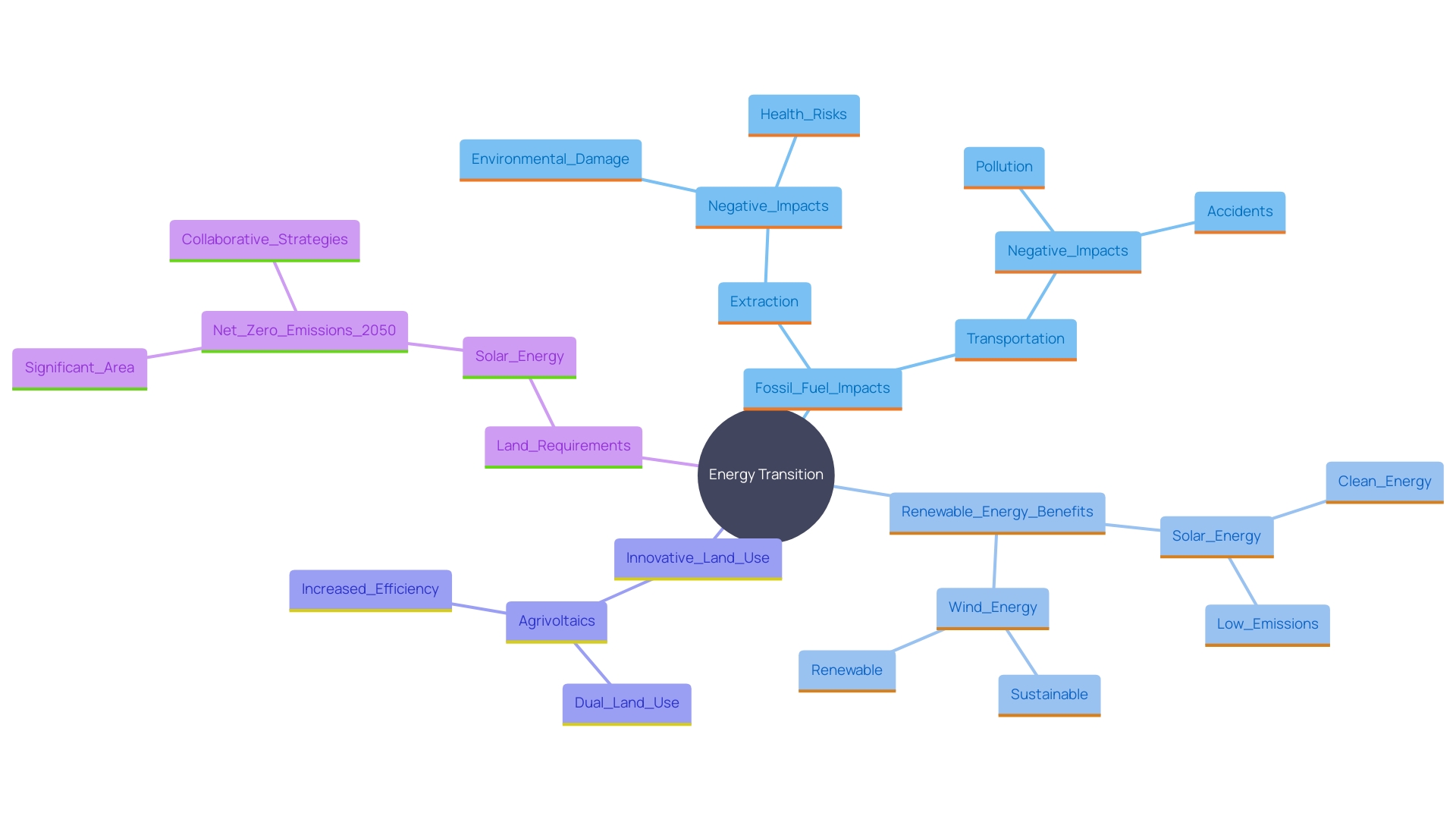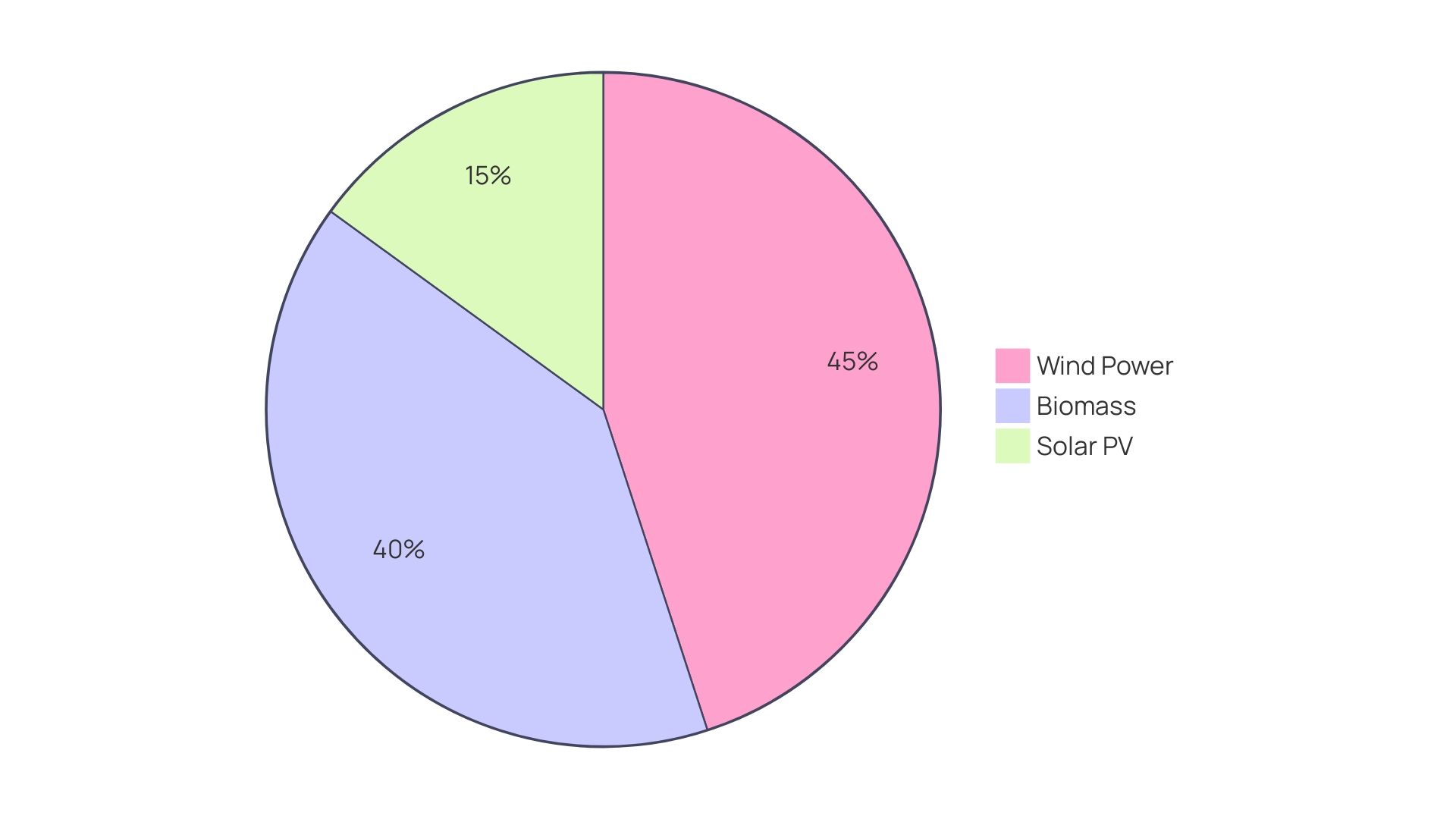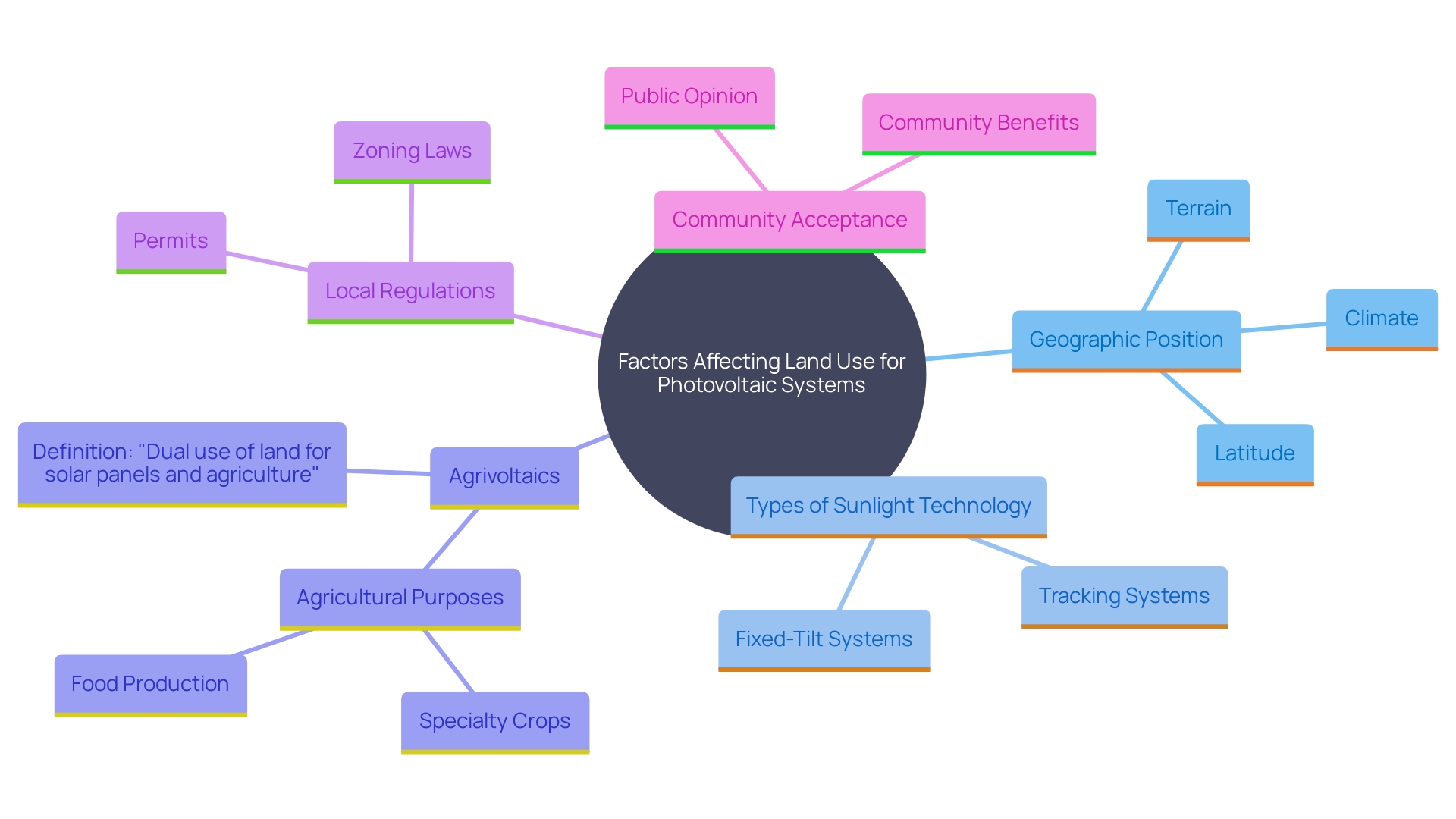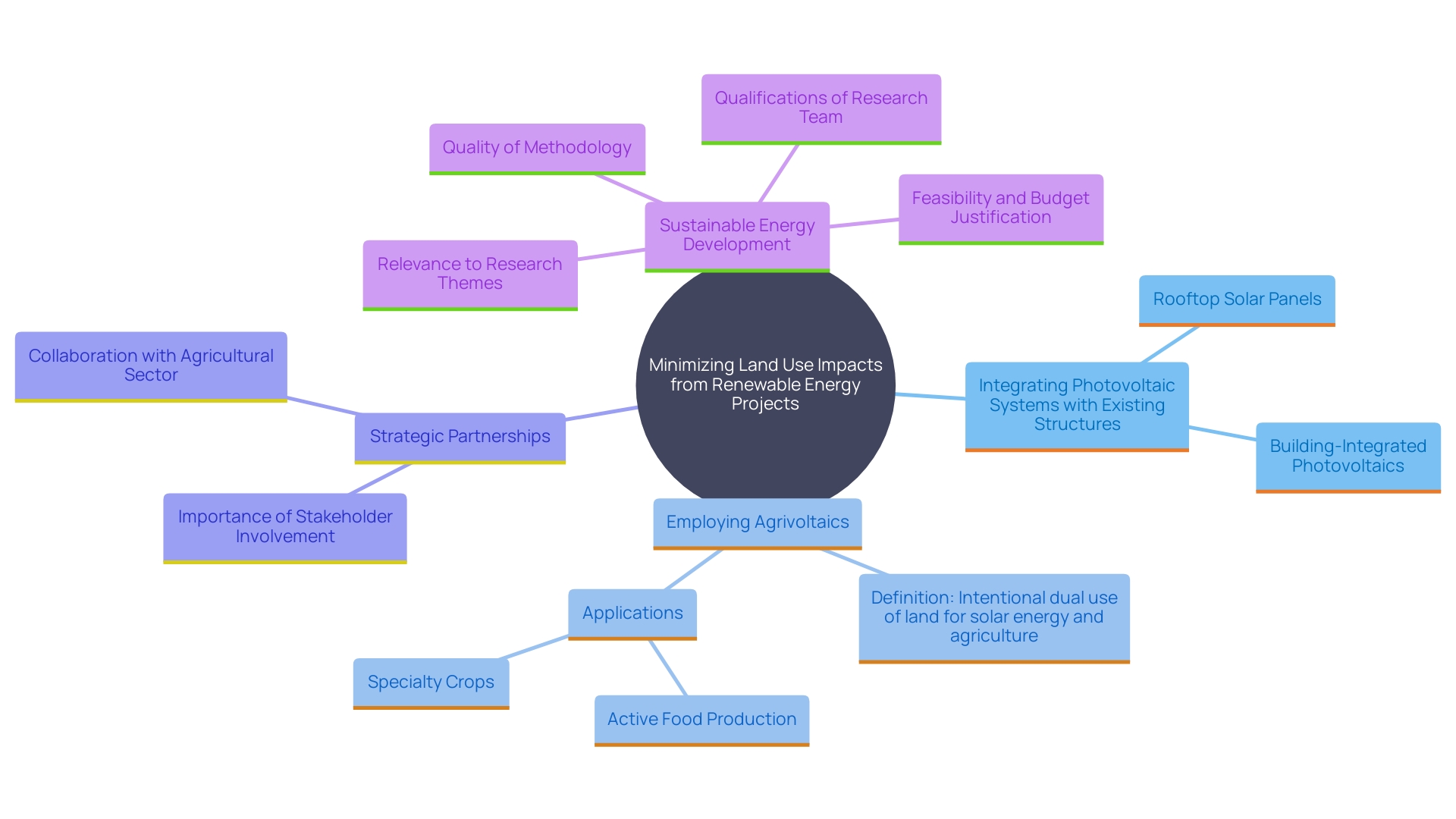Introduction
The global energy landscape is undergoing a transformative shift as the world grapples with the pressing need to transition from fossil fuels to renewable energy sources. The current energy system significantly impacts land use, with fossil fuel extraction and transportation causing ecological disruptions, pollution, and habitat loss. In contrast, renewable energy technologies such as solar, wind, and biomass necessitate unique land use patterns and management strategies.
Concepts like agrivoltaics, which combine solar energy production with agricultural activities, exemplify innovative approaches to optimizing land use.
Understanding the specific land requirements and ecological impacts of renewable technologies is crucial for minimizing environmental footprints and ensuring equitable distribution of benefits. For instance, achieving net-zero emissions by 2050 in the U.S. would require approximately 0.5% of its land for solar energy, highlighting the need for strategic planning and consensus-building among stakeholders. This article delves into the comparative land use demands of various renewable energy sources, factors influencing solar land use, and strategies for minimizing land use impacts, providing a comprehensive overview of the challenges and solutions in the transition to a sustainable energy future.
Overview of Current Energy System Land Use
The worldwide power framework is mainly fueled by fossil fuels, which significantly affect territory utilization through extraction and transportation activities. These processes often lead to significant ecological disruptions, pollution, and habitat loss. In sharp opposition, renewable energy sources such as sunshine, wind, and biomass require unique space utilization patterns and management approaches. For example, the idea of agrivoltaics signifies a dual-purpose method where photovoltaic panels and farming practices coexist on the same terrain, thereby enhancing usage of space and offering an eco-friendly solution. "Flat, well-draining areas that are really great for agriculture are among the most suitable types of terrain for solar farms," notes Lauren McPhillips, underscoring the potential for use conflicts and the importance of integrative strategies.
To shift towards a more sustainable power system, comprehending the specific terrain necessities and ecological effects of renewable technologies is vital. This approach not only assists in reducing environmental footprints but also guarantees that the advantages of renewable resource development are fairly shared among communities. A study from Pennsylvania shows that to achieve net-zero emissions by 2050, the U.S. would need to designate approximately 0.5% of its territory to solar power, equating to nearly 16,000 square miles. This land requirement can seem extensive or minimal, depending on its location and the stakeholders involved. Hence, a comprehensive and multi-party strategy is essential to establish agreement and efficiently handle the shift to renewable power sources.

Comparative Analysis of Renewable Energy Land Use
Land use requirements for renewable sources vary significantly across different technologies. Solar photovoltaic (PV) installations typically require between 5 to 10 acres per megawatt (MW), depending on the efficiency of the technology and geographic location. 'This demand for area has led to innovative solutions such as agrivoltaics, where solar panels are installed on terrain simultaneously used for agricultural purposes, allowing for dual use of space and minimizing conflicts over allocation.'.
In contrast, wind power farms typically require around 30 to 60 acres per MW. However, the area footprint of wind turbines is primarily limited to the turbine base, with the surrounding space remaining available for agriculture or conservation, thus presenting a more flexible use option.
'Biomass power, conversely, necessitates large areas for growing specific crops for fuel, which may lead to rivalry with food production.'. This competition is a significant concern as it affects food security and space availability. The varied requirements of renewable power sources emphasize the significance of strategic planning and multi-use strategies to balance power generation with other uses effectively.
Kaitlyn Spangler, an assistant professor in the Department of Agricultural Economics, Sociology, and Education, highlights the necessity to take into account the environmental and community effects of resource utilization for sustainable power. She states, 'There's this large question of where that area is and how the environment and nearby communities will be affected.' 'This sentiment is reflected by ongoing research and policy initiatives aimed at optimizing resource use for renewable sources while addressing sustainability and community needs.'.

Factors Influencing Solar Land Use
Land use needs for photovoltaic systems are affected by various important elements. Geographic position has an essential influence; regions with high sunlight exposure can reach the same power production with reduced space. The kind of sunlight technology used also affects space usage. For instance, tracking systems are generally more land-efficient than fixed-tilt systems. The idea of agrivoltaics, where terrain is utilized for both energy generation from the sun and farming activities, is gaining popularity and can enhance the use of space. In Pennsylvania, agrivoltaics involves cultivating specialty crops such as vegetables and fruit under photovoltaic panels, which can encourage sustainable and equitable use of ground. Local regulations and community acceptance are significant as well, as stakeholders may impose restrictions that influence project viability. Studies, such as those examining zoning ordinances in the Great Lakes Region, underscore how regulatory frameworks can affect large-scale solar deployment and decarbonization efforts. 'Surveys conducted among farmers in Pennsylvania reveal that agrivoltaics is still emerging, and comprehending usage practices is crucial for future development.'.

Strategies for Minimizing Land Use Impacts
To reduce territory use impacts related to renewable energy projects, several strategies can be employed. Incorporating photovoltaic systems with current structures, such as rooftops or previously developed areas, can greatly lessen space competition. Employing dual-purpose methods, like agrivoltaics, where crops are cultivated next to photovoltaic panels, can boost productivity of the area. Agrivoltaic systems consist of placing photovoltaic panels on farming areas, enabling the concurrent generation of renewable energy and agricultural products. These systems are designed to ensure that crops continue to grow and that livestock can access the area as needed. Typically, solar panels are elevated around five meters off the ground to facilitate ongoing farming activities.
Thoughtful preparation and involvement of interested parties are crucial to guarantee that resource use choices are fair and environmentally responsible. Researchers at the National Renewable Energy Laboratory emphasize the importance of strategic partnerships and innovative interventions to address governance issues related to territory. By integrating tested and new initiatives, it is possible to contribute to fair and just tenure security and reduce conflicts over property use.
The growth of sunlight power is essential for reaching net-zero emissions by 2050, but it necessitates careful evaluation of environmental effects. For instance, the U.S. would need to allocate 0.5% of its territory to solar power, an area almost equivalent to a third of Pennsylvania. This highlights the importance of minimizing conflicts over land use and ensuring that the benefits and costs of development are equitably distributed. By employing these strategies, the renewable energy industry can move forward sustainably while addressing the needs of both the environment and local communities.

Conclusion
The transition from fossil fuels to renewable energy sources is essential for addressing ecological disruptions and promoting sustainable land use. The current energy system, heavily reliant on fossil fuels, poses significant challenges, including habitat loss and pollution. In contrast, renewable technologies, such as solar, wind, and biomass, offer innovative solutions but require careful consideration of their distinct land use patterns.
Agrivoltaics exemplifies a promising approach by allowing for the coexistence of solar energy production and agricultural activities, thereby optimizing land use and minimizing conflicts.
A comprehensive analysis reveals that the land use requirements of renewable energy technologies vary considerably. Solar photovoltaic installations demand significant space, while wind energy utilizes land more flexibly. Biomass energy raises concerns about competition with food production, highlighting the need for strategic planning in land allocation.
Factors such as geographic location, technology type, and regulatory frameworks significantly influence solar land use, necessitating a multi-faceted approach to balance energy production with environmental and community impacts.
To mitigate land use impacts associated with renewable energy projects, several strategies can be implemented. Integrating solar installations with existing infrastructure and employing dual-use systems like agrivoltaics can enhance land productivity and reduce competition. Engaging stakeholders and fostering strategic partnerships are crucial for ensuring equitable land use decisions.
The goal of achieving net-zero emissions by 2050 underscores the importance of minimizing land use conflicts and ensuring that the benefits of renewable energy development are fairly distributed. By prioritizing these strategies, the renewable energy sector can advance towards a sustainable future that meets both environmental and community needs.




